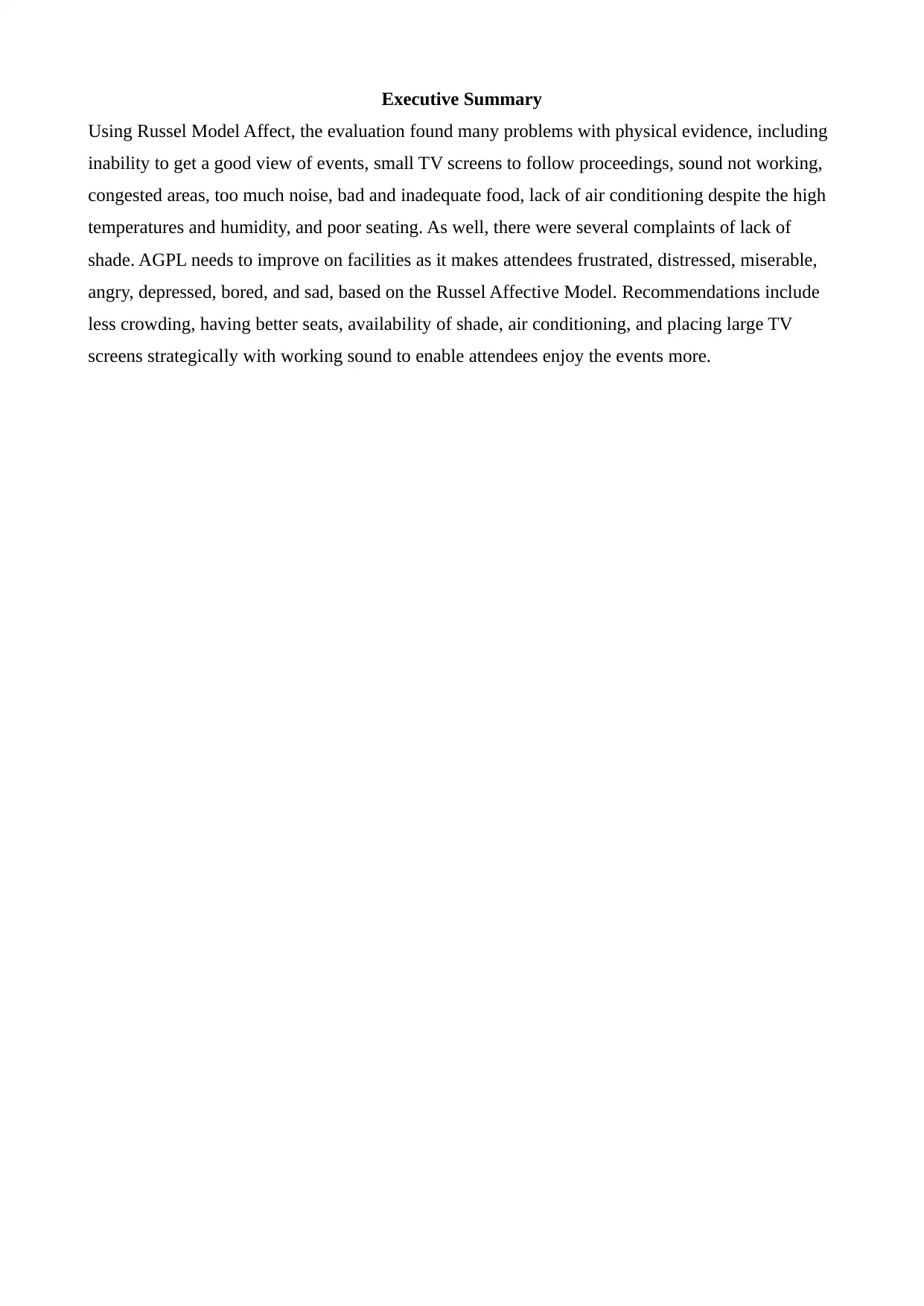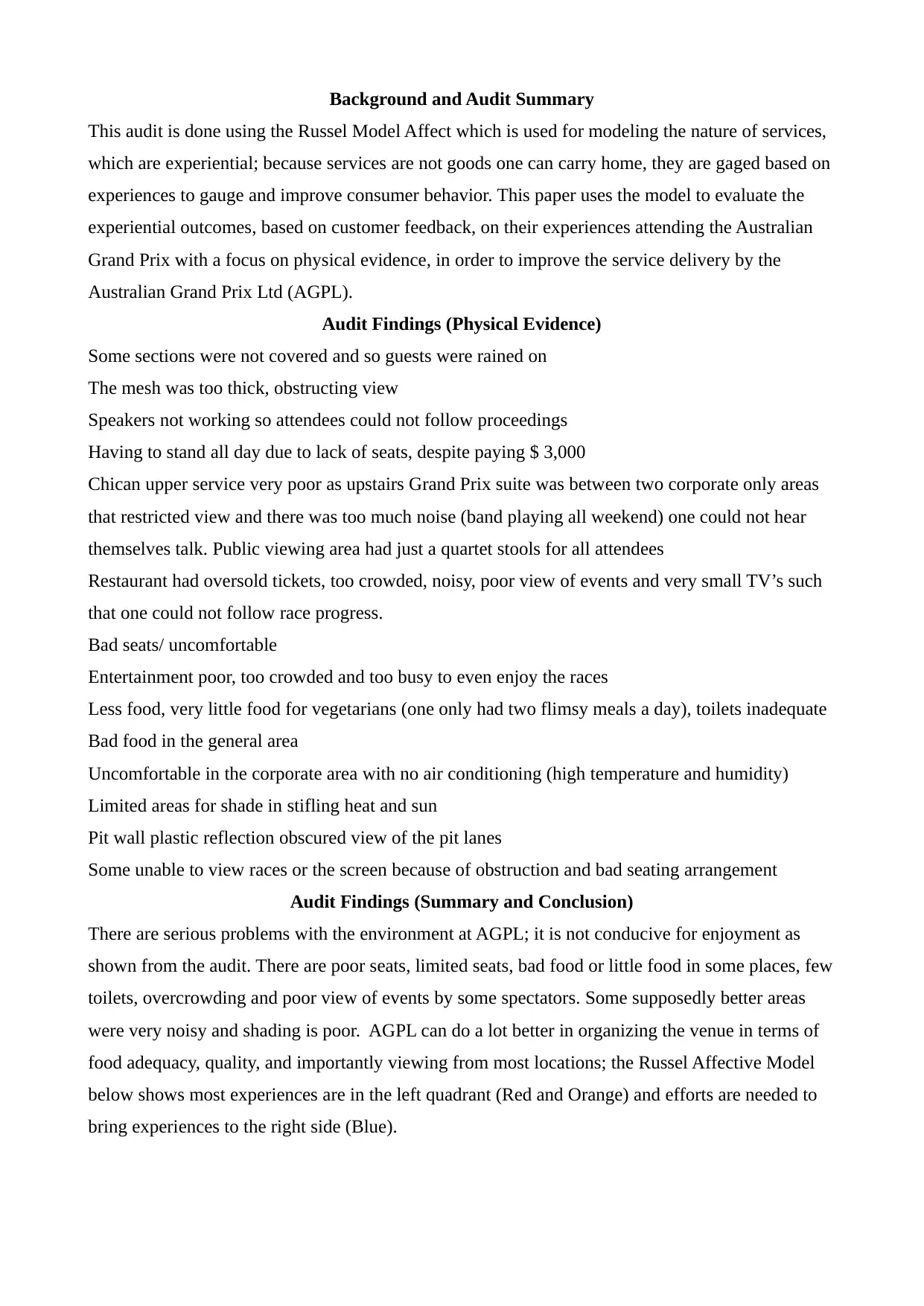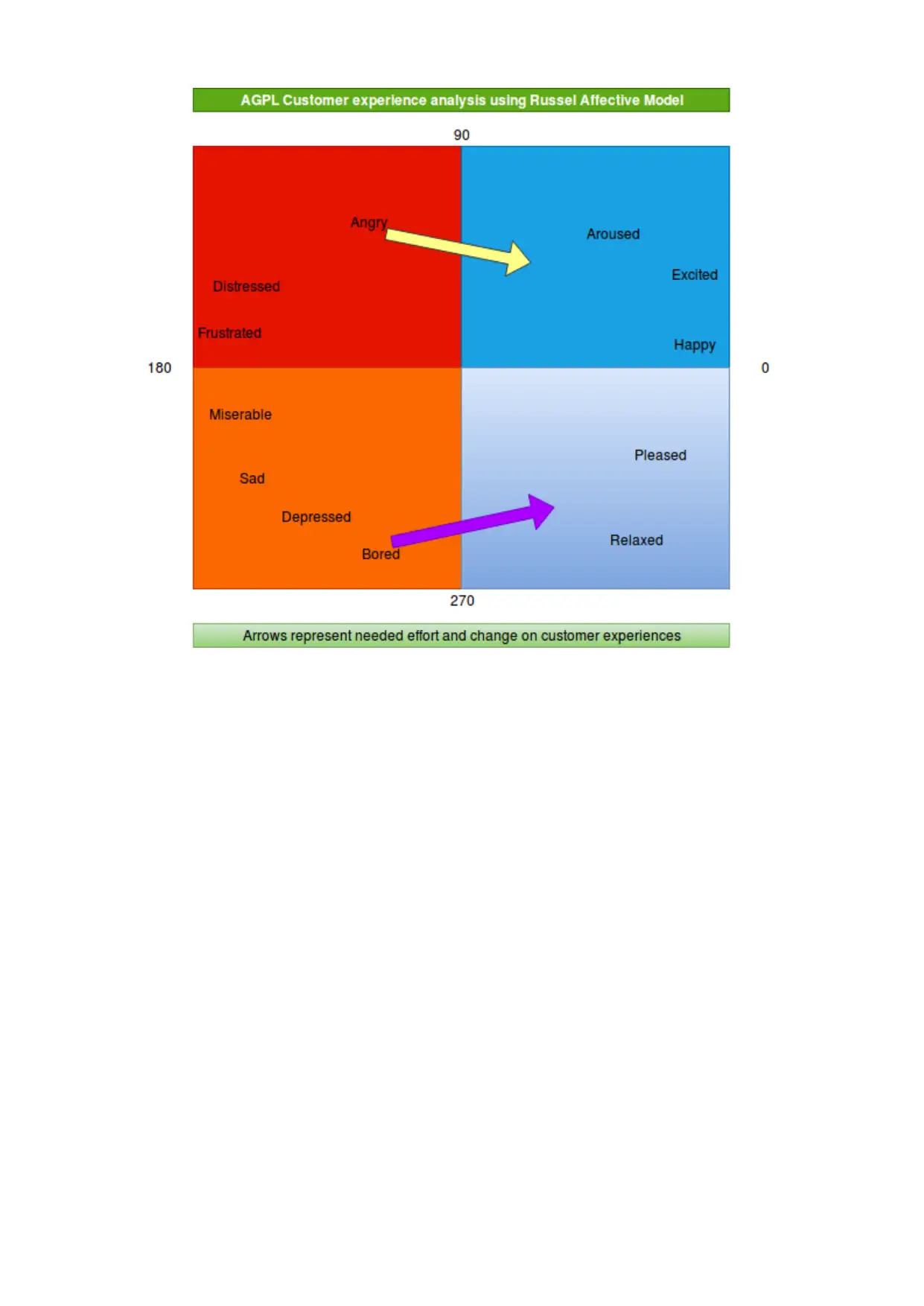MKTG1053 Service Quality: Australian Grand Prix Audit & Russel Model
VerifiedAdded on 2023/04/04
|4
|517
|198
Report
AI Summary
This report provides an executive summary of a service quality audit conducted on the Australian Grand Prix Ltd (AGPL) using the Russel Affective Model. The audit focuses on physical evidence and experiential outcomes based on customer feedback. Key findings reveal significant issues with the venue's environment, including poor seating, inadequate food, overcrowding, obstructed views, excessive noise, and insufficient shade and air conditioning. These issues lead to negative emotional responses from attendees, such as frustration, anger, and boredom. The report recommends improvements in seating arrangements, shade availability, air conditioning, strategically placed large TV screens with functional sound, and overall venue organization to enhance the attendee experience and shift customer experiences towards more positive emotional states, as indicated by the Russel Affective Model. Ultimately, AGPL needs to address these deficiencies to improve customer satisfaction and service quality.
1 out of 4






![[object Object]](/_next/static/media/star-bottom.7253800d.svg)